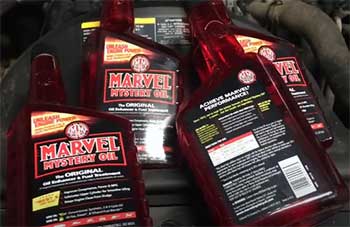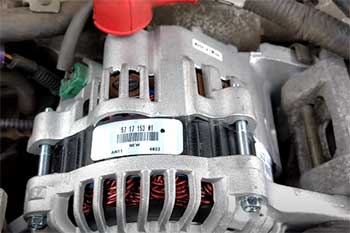Let me tell you why you need to grab FLUID FILM undercoating right now. I’ve been wrestling with rust on my vehicles for years, and this stuff? It’s a game-changer.
Living in the North East USA, where salt and snow chew through metal like it’s breakfast, I was desperate for something that actually works.
FLUID FILM isn’t just another product—it’s a lanolin-based, solvent-free shield that promises to protect your car, truck, or trailer from corrosion. Trust me, after trying it, I’m hooked. You should be too.
Here’s my story, the good, the bad, and everything in between.
My Experience With FLUID FILM Undercoating
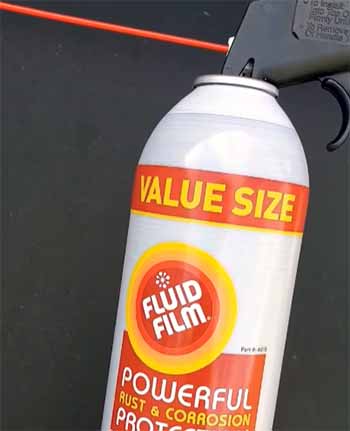
I’ll never forget the first time I cracked open a gallon of FLUID FILM.
It was a chilly fall day in Michigan, and I was staring down the underbelly of my trusty old F150, already showing those telltale rust spots that haunt anyone in the Rust Belt.
A neighbor had raved about this stuff, claiming it was better than the rust converters I’d been slathering on for years.
So, I figured, why not?
I ordered a gallon and an applicator kit, ready to see if it lived up to the hype.
The smell hit me first—not bad, just earthy, like wool or a barn on a good day.
I liked that it didn’t sting my nose like some chemical nightmares I’ve used.
I suited up with gloves (latex kitchen ones, because I’m cheap) and got to work with a brush.
Application was a breeze—it flowed on smooth, coating every crevice I could reach. I didn’t even need fancy tools; a basic brush did the trick for touch-ups. Later, I upgraded to a shutz gun for bigger jobs, and wow, it made things even easier.
Spraying it felt like arming my truck for battle.
After a few hours, my truck was glistening with this oily sheen. Messy? Oh yeah. I got some on my jeans and had to scrub overspray off the windows, but it was worth it. Fast forward a month—I slid under to check my work, and the coating was still there, holding strong against Michigan’s damp, salty air.
I’ve been using it for two years now, and while I’m not ready to call it a rust miracle just yet, it’s definitely slowed the enemy’s advance. I’ve since sprayed it on my wife’s car, our ancient utility trailer, and even some outdoor barrels. It’s become my go-to, and I’m not looking back.
The first gallon arrived upside down but intact—no leaks, just some drips on the lid I wiped off. The second came without a handle, but I rigged one from an old bucket. Little quirks like that don’t faze me when the product delivers.
It’s not perfect, but it’s real, and I’m sold on its potential.
Pros of FLUID FILM Undercoating
I’ve put FLUID FILM through its paces, and here’s why I think it’s worth your time and money. Let’s break it down.
- Easy Application That Even I Can Handle
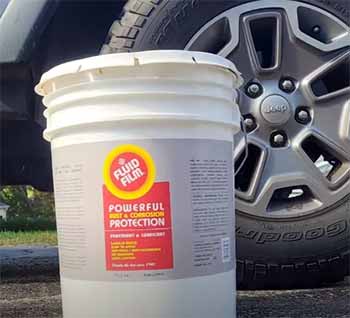
You don’t need to be a pro to use this stuff. I started with a brush, just slathering it on rust spots, and it went on like butter.
When I stepped up to the shutz gun, it was even better—smooth, even coverage in half the time.
The aerosol cans with wands are clutch for tight spots like door panels or frame rails.
No complicated setup, no stress.
If I can do it in my driveway with zero experience, you can too.
- Long-Lasting Protection That Sticks Around
Here’s the kicker: FLUID FILM doesn’t just sit there—it creeps into metal pores and stays put. I’ve checked my truck after months of road spray, and it’s still weeping, protecting those hidden nooks where rust loves to start.
In areas shielded from water, like inside frame rails, it’s held up for over a year without needing a touch-up. That’s huge for me, especially in the North East where winter is brutal.
- Environmentally Friendly and Safe
I love that it’s non-toxic and solvent-free. No harsh fumes burning my lungs, no guilt about harming the planet. It’s lanolin-based—think sheep wool vibes—so it feels natural.
My wife, who can smell a chemical a mile away, hasn’t complained once when I use it on her Porsche. That’s a win in my book.
- Versatile Beyond Just Vehicles
This isn’t just for cars. I’ve sprayed it on my 30-year-old trailer—wood, metal, tires, everything—and it looks better than ever. Even my decorative whiskey barrels got a coat, and the wood staves and metal bands are holding up like champs.
It’s a lubricant too, so I’ve used it on stuck bolts and snowblower chutes. One product, endless uses.
- Slows Rust Like a Champ
Does it stop rust dead? Not quite, but it slows it down better than anything I’ve tried. After two years, my brake lines and frame rails look way healthier than they should in this salt-soaked region.
It’s not a cure-all, but it’s buying me time, and that’s more than I can say for most rust converters.
Cons of FLUID FILM Undercoating
Look, I’m not here to sugarcoat it. FLUID FILM has its downsides, and I’ve run into them firsthand. Here’s what you need to watch out for.
- Messy Application That’ll Test Your Patience
This stuff is oily, and it gets everywhere. My first go-round left me with greasy jeans and overspray on my truck’s windows that took elbow grease to remove.
You’ll want gloves, maybe even a coverall—I learned that the hard way. It’s not a quick, clean job, so brace yourself for a bit of chaos.
- Washes Off in Exposed Areas
Here’s my biggest gripe: if it’s hit by road spray or water, it doesn’t last. I’ve noticed it thinning out on wheel wells and exposed frame sections after a few months of winter driving.
You’ll need to reapply yearly in those spots, which adds up in time and effort. It’s best for hidden areas where water can’t touch it.
- Greasy Finish That’s Tough to Overpaint
If it fails, good luck prepping that spot for paint or another product. The oily residue clings like a bad habit, making it a nightmare to sand or clean off. I haven’t had to cross that bridge yet, but it’s a risk I’m aware of. Plan accordingly.
- Odor Lingers for a Bit
It’s not awful—kind of a natural, woolly scent—but it sticks around for a week or so after application. If you’re sensitive to smells, it might bug you. I didn’t mind, but my wife gave me a side-eye until it faded.
Maintenance Tips For FLUID FILM Undercoating
You’ve got FLUID FILM on your ride—now what? Here’s how I keep it working its magic, based on my own trial and error.
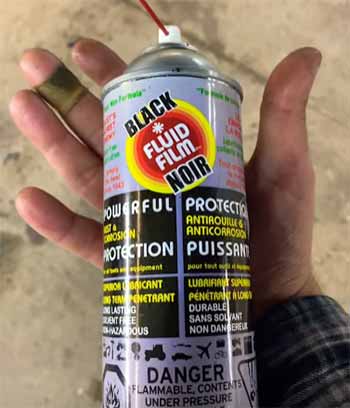
- Inspect and Touch Up Annually: Every fall, I jack up my truck, pull the wheels, and take a good look. Exposed spots like wheel wells need a fresh coat—road spray is ruthless. I use aerosol cans with wands for quick touch-ups in tight spaces. Hidden areas like frame rails? They’re usually fine, but I check anyway. Stay ahead of the game, and you’ll stretch its lifespan.
- Clean the Surface First (If You’re Smart): I’ve sprayed it over dusty trailer parts and gotten away with it, but for your car, wash the underbody first. Let it dry a couple days—wet metal and FLUID FILM don’t mix well. A clean surface means better adhesion and longer protection. Lesson learned from my lazy trailer days.
- Use the Right Tools for the Job: A brush works for small jobs, but a shutz gun is your friend for big areas. I thin it with a splash of paint thinner—about 7:1 ratio, eyeball it—until it sprays smooth. Aerosol cans are perfect for nooks and crannies. Pick your weapon based on the task, and you’ll save time and frustration.
- Store It Properly: That gallon can? Keep it upright and sealed tight. Mine arrived upside down once, and I had to wipe off drips. If it’s got no handle, rig one like I did—it’s heavy to lug around otherwise. Store it somewhere cool, and it’ll stay ready for your next battle with rust.
- Pair It with Other Products for Exposed Spots: For areas that get blasted by water, I’ve started layering Amsoil HD Metal Protector over FLUID FILM. It sets harder and resists wash-off better. FLUID FILM handles the hidden stuff, while Amsoil takes the frontline hits. Experiment with combos that work for your climate.
Comparison of FLUID FILM Undercoating With Other Brands
Alright, let’s pit FLUID FILM against some heavy hitters in the undercoating world—Ziebart, Krown, and Woolwax. I’ve tinkered with enough rust protection to know what’s what, so here’s how FLUID FILM stacks up, one-on-one, based on my hands-on take.
- FLUID FILM Vs. Ziebart Undercoating
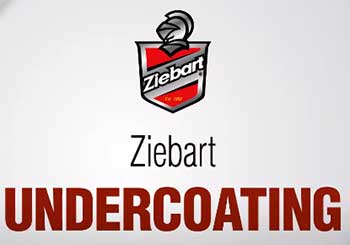
Ziebart’s the big name you see at shops, with its thick, rubberized coating that promises a permanent shield.
I’ve seen it on buddies’ trucks—quiet as a mouse and tough against rocks. But here’s the rub: once it’s on, it’s on.
If it cracks (and it can), water sneaks underneath, and rust festers silently.
FLUID FILM, on the other hand, stays flexible, creeping into seams and keeping moisture out without locking you in.
Ziebart’s pro-applied price tag stings too—hundreds of bucks versus my DIY FLUID FILM gallon for under $50. I’d pick FLUID FILM for cost and adaptability, but Ziebart wins if you want a one-and-done, noise-deadening fortress.
- FLUID FILM Vs. Krown Undercoating
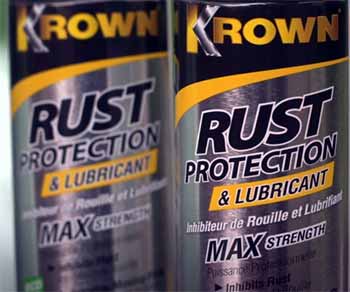
Krown’s another oil-based contender, and I’ve heard it’s a Canadian favorite for rust-proofing.
Like FLUID FILM, it’s thin, penetrates deep, and needs yearly re-ups.
I tried a Krown-treated rig once—super slick, and the rust was at bay after a winter.
The catch?
Krown’s usually shop-applied, costing $100-$150 a pop, and it’s got a sharper solvent smell that lingers longer than FLUID FILM’s earthy wool vibe.
I can slap FLUID FILM on myself for cheaper, and my wife doesn’t glare at me for stinking up the garage.
Krown’s solid for pros, but FLUID FILM’s my DIY champ for ease and budget.
- FLUID FILM Vs. Woolwax Undercoating
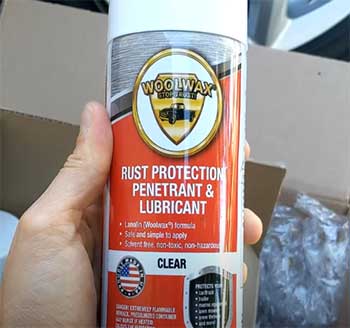
Woolwax and FLUID FILM are cousins—both lanolin-based, both runny and rust-fighting.
I got my hands on Woolwax once, and it’s thicker, which means less dripping during application.
It clings better to exposed spots like wheel wells, where FLUID FILM washes off faster.
But here’s where I lean: Woolwax costs more—think $60 a gallon versus FLUID FILM’s $40—and it’s harder to find locally.
FLUID FILM’s thinner mix sprays easier with my shutz gun, and I’ve got no complaints about its coverage in hidden areas.
Woolwax might edge out on durability in splash zones, but FLUID FILM’s price and availability keep me loyal.
In the end, FLUID FILM holds its own. Ziebart’s for the set-it-and-forget-it crowd, Krown’s a pro-grade oil option, and Woolwax is a beefier sibling. Me? I’m sticking with FLUID FILM for its versatility, wallet-friendly vibe, and the fact I can slap it on in my driveway without a fuss.
Your call depends on your ride and how much you’re willing to sweat—or spend.
Frequently Asked Questions (FAQ)
From my experience, it depends on where you apply it. In hidden spots like frame rails or door panels, I’ve seen it last over a year, still weeping and protecting. Exposed areas like wheel wells? You’re looking at a few months before road spray wears it down. Plan on yearly touch-ups for those spots, and you’re golden.
It’s not a rust-stopper—it’s a rust-slower. I’ve watched it hold back corrosion on my truck’s brake lines and trailer for two years now, but it won’t erase existing rust or halt it forever. It’s best at preventing new rust in treated areas, especially where water can’t wash it away.
I’ve heard this rumor, and honestly, I haven’t seen it. My trailer sits outside, coated in FLUID FILM, and no mice have set up camp. The lanolin smell might sound like a snack to some, but in my yard, it’s been a non-issue. Maybe I’ve just got lazy rodents.
For my F150, I used about two aerosol cans for tight spots and a gallon for the rest with a shutz gun. If you’re going all-aerosol, figure four to six cans for a full-size truck, depending on how thick you lay it on. Gallon cans are more cost-effective for big jobs—trust me, you’ll save cash that way.
Wrapping Up
After two years of battling rust with FLUID FILM, I’m telling you to buy it. It’s not flawless, but it’s the best ally I’ve found for keeping my vehicles alive in the North East’s salty hellscape.
Easy to apply, eco-friendly, and versatile—it’s worth every penny. Grab a gallon, gear up, and give your ride the protection it deserves. You won’t regret it.
